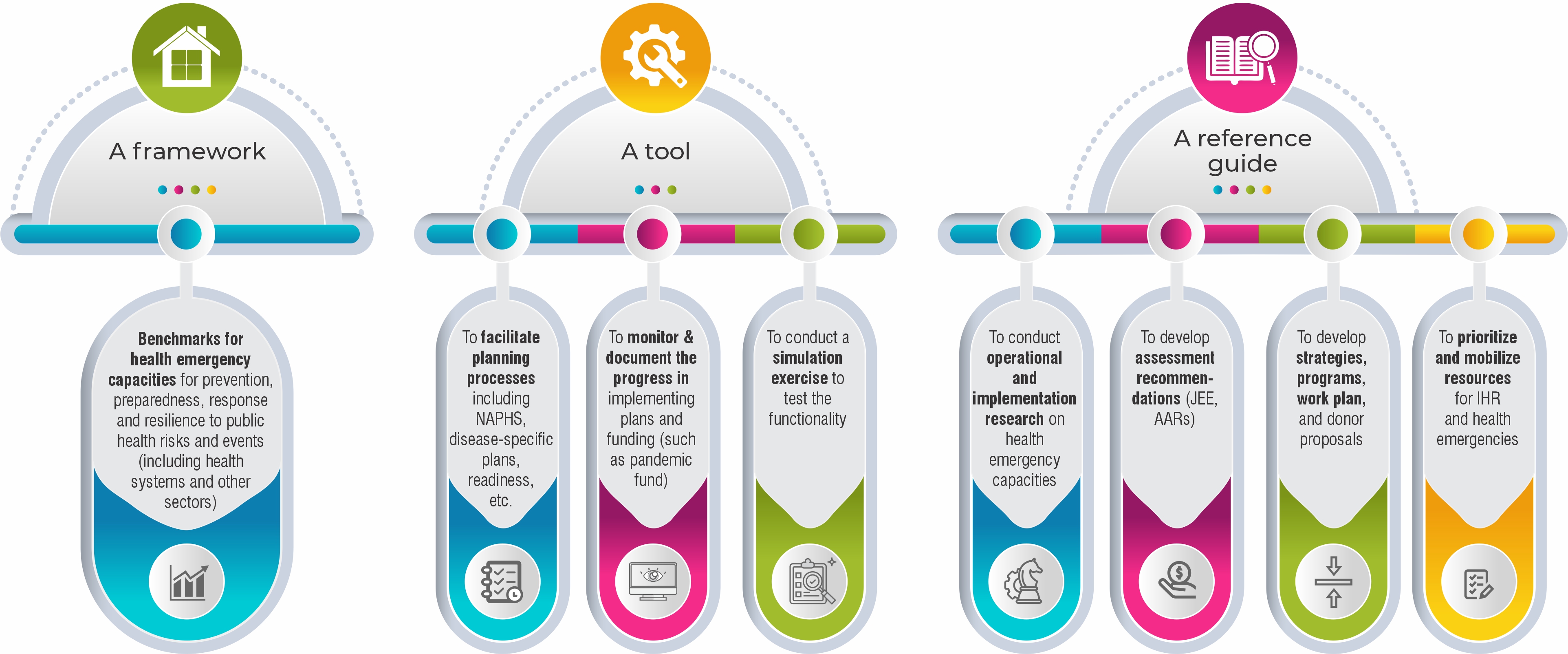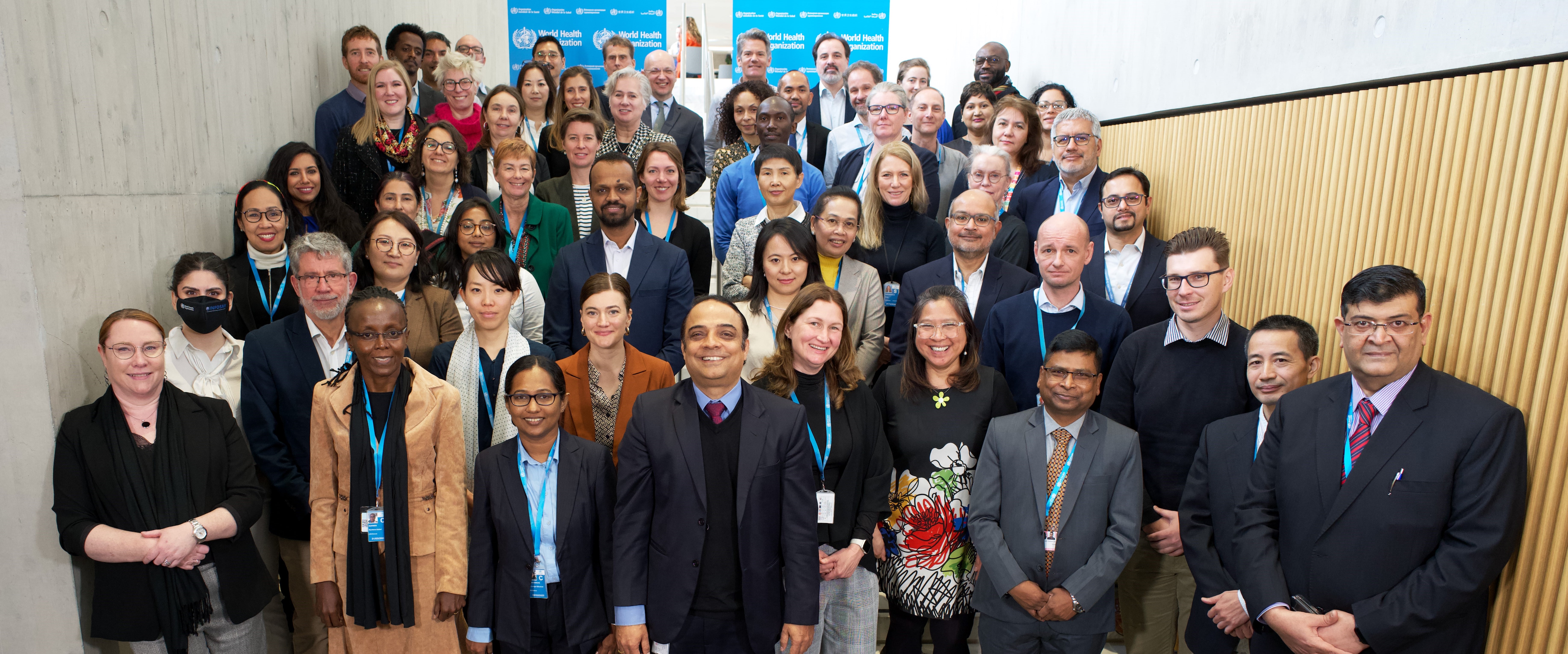How to use the WHO benchmarks for strengthening health emergency capacities?
- A framework
- to benchmark health emergency capacities for prevention, preparedness, response and resilience to public health risks and events (including health systems and other sectors)
- A tool:
- to facilitate planning process including NAPHS
- to draft and develop disease-specific plans, readiness plans or area specific plans for improvement
- to monitor & document the progress in implementing plans and funding (such as The Pandemic Fund)
-
- to conduct operational and implementation research on health emergency capacities
- to develop assessment recommendations (JEE, AARs)
- to develop strategies, programs, prioritization, work plans and donor proposals
- to prioritize and mobilize resources for IHR and health emergencies

WHO Benchmarks tool digital platform
WHO Benchmarks tool digital platform is a comprehensive portal that offers:
- a step-by-step process to support planning processes for emergency management.
- functionality to generate and filter actions based on type and sector, as well as additional actions for threat-agnostic readiness or disease-specific activities.
- Reference library
The digital platform can be accessed by following below button :
Call for Submissions of References
The WHO Benchmarks for Strengthening Health Emergency Capacities is tool to guide the country strengthen the capacities of International Health Regulations and health emergency prevention, preparedness, response, and resilience capacities (HEPR) with a whole-of-system approach at all levels.
The benchmarks provide a bank of over 1900 actions to help countries strengthen health emergency capacities as relevant to in-country status and priorities. The benchmarks reference library provides guidance on how to implement actions through acting as an evidence base repository for all benchmark technical areas. Users can easily access, use library documents and adopt to relevant context.
We are seeking best practices, guidelines, tools and training packages to support the implementation of the benchmarks and actions. specifically, the types of references include:
- Guidelines/manuals
- Standard operating procedures
- Tools, training package, etc.
- Templates (terms of references, steering committee, memorandum of understanding, project management, monitoring and evaluation)
- Documents reflecting best practices and case studies across regions, which can be replicated or adopted in different contexts.
- Others.
Submit your most updated references Here
Uploaded documents will be reviewed by a WHO technical committee. The process takes 6-8 weeks. Accepted documents will be included in the library, serving as a resource for strengthening the capacities of IHR and HEPR.
The reference library is a living repository, which will remain open to submissions indefinitely, and will continue to evolve to support current evidence as further examples and best practice are added.
For inquiries, Please contact: ehs@who.int
